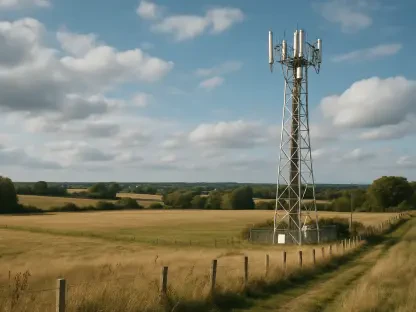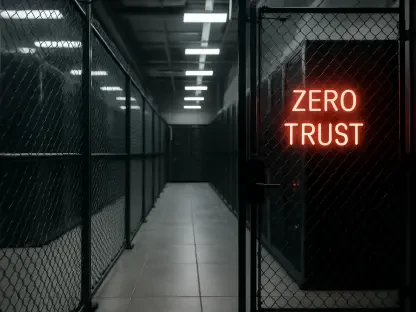In an era where split-second decisions can save lives or redefine industries, the U.S. National Science Foundation (NSF) is spearheading a groundbreaking effort to overcome one of the most persistent challenges in modern wireless communication: latency in 5G and next-generation (Next-G) networks. With a substantial investment of over $17 million through the “Breaking the Low Latency Barrier for Verticals in Next-G Wireless Networks” program, known as NSF Breaking Low, the agency is funding innovative research to achieve near-instantaneous data transmission. Managed by the NSF’s Directorate for Technology, Innovation and Partnerships (TIP), this initiative seeks to revolutionize sectors like telemedicine, intelligent transportation, and beyond by eliminating delays that hinder real-time applications. As technology increasingly shapes daily life, the ability to transmit data without lag is no longer a luxury but a necessity, making this program a pivotal step toward a more connected and responsive future.
Pioneering Solutions for Latency Challenges
The NSF Breaking Low program represents a targeted push to address the critical issue of latency, which is the time it takes for data to travel across a network, often creating bottlenecks in 5G systems and posing hurdles for future Next-G architectures. Even the slightest delays can disrupt applications requiring immediate responsiveness, such as remote surgical procedures or autonomous vehicle coordination. By allocating significant funding to three interdisciplinary research teams over a two-year period, the NSF is fostering an environment where cutting-edge solutions can be developed and tested. These teams are tasked with reimagining network frameworks to slash delays, ensuring that data flows seamlessly in high-stakes scenarios. The potential impact of this work is profound, promising to enable technologies that could transform healthcare delivery by allowing doctors to operate from miles away without hesitation or improve road safety through instantaneous vehicle communication.
Beyond the technical focus, the NSF initiative stands out for its commitment to collaboration across sectors. Comprising experts from universities and technology companies, the research teams bring together academic precision and industry pragmatism to craft solutions that are both innovative and deployable. This partnership model ensures that theoretical advancements are grounded in real-world applicability, addressing practical challenges like network congestion and inefficient routing. Additionally, the program places a strong emphasis on workforce development by engaging students alongside seasoned professionals, cultivating a new generation of talent equipped to tackle future challenges in wireless technology. This holistic approach not only aims to solve immediate latency issues but also builds a sustainable foundation for long-term innovation in the field, positioning the United States as a frontrunner in shaping the next wave of connectivity.
Innovative Frameworks for Network Advancement
One of the most distinctive elements of the NSF Breaking Low program is its adoption of the “Ideas Lab” concept, a dynamic platform that brings together diverse experts to brainstorm and prototype solutions for latency barriers. This collaborative space encourages unconventional thinking and fosters cross-disciplinary dialogue, breaking down traditional barriers between academia, industry, and other stakeholders. By creating an environment where ideas can be freely exchanged and tested, the program sparks creativity in addressing complex issues in network architecture and data transmission protocols. The result is a fertile ground for novel strategies that could redefine how wireless networks operate, ensuring data moves with minimal delay. Such innovation is crucial for enabling applications where timing is everything, from real-time industrial automation to emergency response systems that rely on instant communication.
The research teams under this initiative are zeroing in on specific technical obstacles that contribute to latency, such as hardware limitations and inefficient data pathways. Their work involves designing and testing technologies that optimize network performance, reducing the time it takes for information to travel from source to destination. This could mean reengineering how data is prioritized in congested systems or developing hardware capable of handling high-speed transactions without faltering. The implications of these advancements are far-reaching, potentially allowing for a future where a surgeon performs a life-saving operation remotely with no perceptible lag, or where smart cities manage traffic flow in real time to prevent accidents. By tackling these foundational issues, the NSF is paving the way for a technological landscape where delays are a relic of the past, opening doors to possibilities once thought unattainable.
Securing a Competitive Edge in Global Technology
The NSF’s investment in low-latency networks transcends mere technical improvement; it is a strategic endeavor to cement U.S. leadership in the global telecommunications arena. As wireless communication becomes increasingly integral to economic stability and national security, ensuring that American innovations set the benchmark is paramount. Leaders within the NSF, such as Erwin Gianchandani, assistant director for TIP, have articulated the importance of this initiative in maintaining a competitive advantage over international counterparts. By prioritizing sectors like remote healthcare and intelligent transportation, the program aims to drive transformative change that enhances societal well-being while safeguarding technological sovereignty. The focus on low-latency solutions ensures that critical applications, which could redefine industries, are developed and implemented under U.S. standards, preventing reliance on foreign systems.
Moreover, the broader implications of the NSF Breaking Low program align with global trends toward digital transformation and real-time data processing. As industries ranging from manufacturing to urban planning increasingly depend on instantaneous connectivity, the demand for networks with negligible delays continues to grow. This initiative positions the United States to meet these needs head-on, fostering advancements that could power the Internet of Things (IoT), smart infrastructure, and beyond. The program’s emphasis on public-private partnerships further accelerates progress by ensuring that research outcomes are directly applicable to market demands. By blending academic exploration with industry insights, the NSF is not only addressing current latency challenges but also anticipating future needs, reinforcing the nation’s role as a pioneer in wireless technology for years to come.
Reflecting on Transformative Outcomes
Looking back, the NSF Breaking Low program emerged as a visionary response to the pressing need for ultra-low-latency networks in 5G and Next-G systems. The substantial funding of over $17 million to interdisciplinary teams marked a significant commitment to overcoming delays that once limited the potential of real-time applications. Through innovative approaches like the “Ideas Lab” and strategic collaborations between academia and industry, the initiative tackled complex technical barriers with creativity and pragmatism. The focus on workforce training also ensured that the next generation of experts was prepared to sustain this momentum, embedding long-term resilience into the sector.
As a final consideration, the success of this program underscored the importance of continued investment in wireless innovation. The next steps involved scaling the solutions developed by the research teams, integrating them into commercial networks, and exploring new application verticals that could benefit from reduced latency. Policymakers and industry leaders were encouraged to build on these foundations, fostering an ecosystem where technological advancements could thrive. The legacy of this effort highlighted a clear path forward: sustained collaboration and strategic funding remained essential to maintaining global leadership in connectivity, ensuring that transformative technologies continued to enhance lives across diverse domains.









